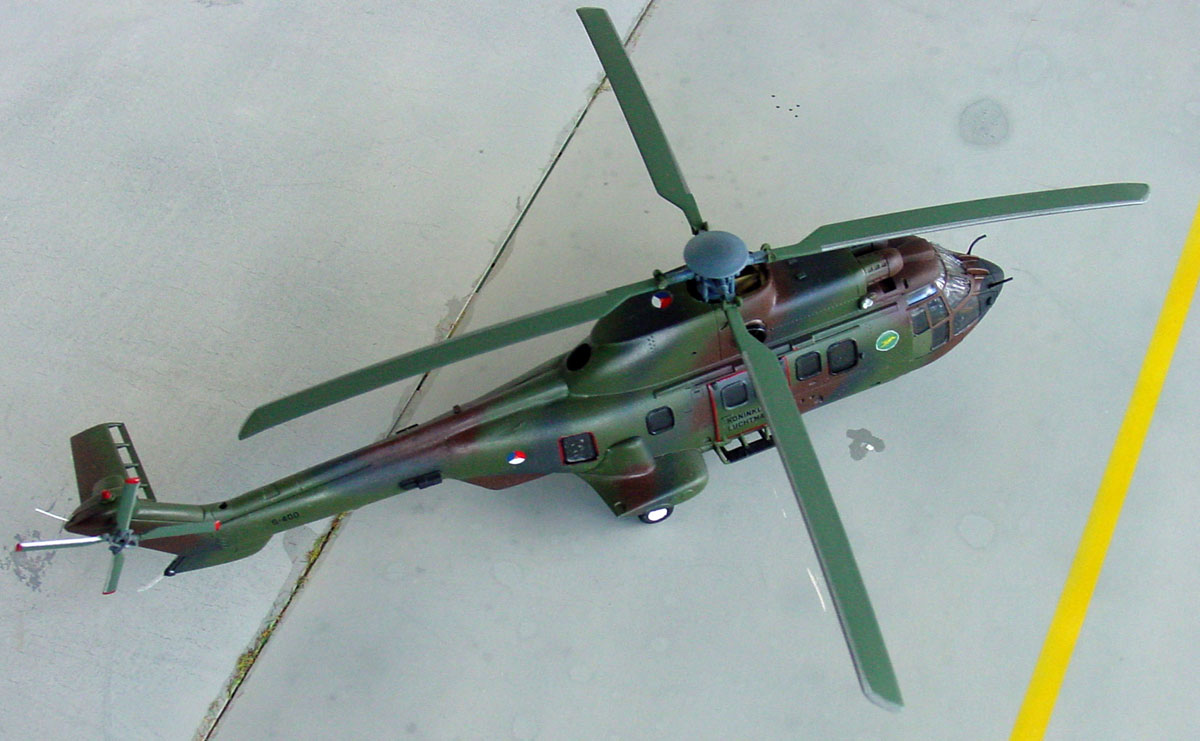AS 532 U2 Cougar
Cougar model in 1/72 scale Italeri / (Revell) kit (converted)
Review
Modelling report
The Super Puma
twin turbine medium lift helicopter was extensively modified from the original
Puma. The Super Puma AS 332 was a longer and upgraded version of the Puma,
the type being continually improved and enlarged. It had a larger cabin
and more powerfull engines.
The latest military variant of the Super Puma is called the Cougar. It has even more modifications as compared to the Super Puma. First flight of the Cougar was in Februari 1987. The new European Eurocopter organisation is now the manufacturer.
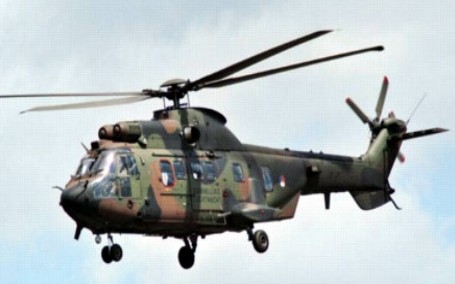
The variant AS 532 U2 Cougar Mk II is an unarmed tactical military transport helicopter and it is also used by the Royal Netherlands Air Force on behalf on the Air Mobile Army Brigade. It is even longer than the Super Puma as the fairing between the aft cabin and tailboom is a bit longer and made of composites. The latest Cougars got an improved rotor system with larger diameter blades and a new rotorhead that incorporates some lessons learned from the NH90 helicopter currently being developed (a never ending project....) . It also has a small weather radar in the longer nose.
The Cougar landing gear was also changed with two single larger rear wheels and twin nose wheels. Powerplant of the AS 532 U2 is the Turbomeca Makila 1A2 with max 2100 shp for 30 seconds emergency power and a normal max power of 1657 shp.
The Cougar cabin can accommodate various lay-outs such as folding seats for up to 28 troops, 12 stretchers etc. The latest Cougar helicopters also have EFIS/IFDS cockpit displays and an automatic flight control system.
Eurocopter
AS 532 U2 Cougar technical data:
Main rotor
: diameter 16.20 m , 4 blades with curved tips (diameter 0.60
m more than the Super Puma)
Tailrotor:
diameter 3.15 m, 4 blades
Wheel track
: 3.00 m
Cruising speed
about max 277 km/hour;
Fuselage modifications:
cabin plug with a 0.76 m forward section as compared to normal Puma with
also new longer radar nose; rear section is quite different as compared
to Super Puma with new composite fairing and shorter tailboom ;
Overall, the
AS 532 U2 fuselage length from forward radarnose to at most tailtip (exclusive
rotors) is 16.27 m (or 22.6 cm in 1/72 scale ).
The drawing
shows the correct measurements for a AS 532 U2 Cougar.
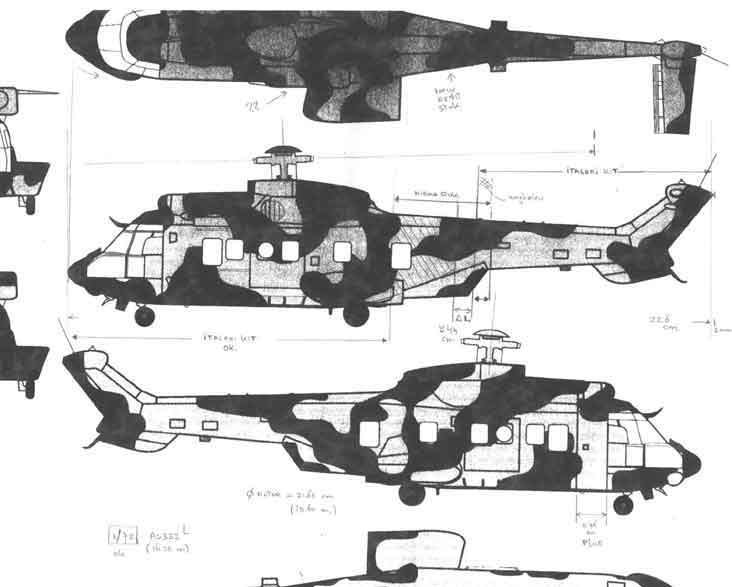
See also the
1/32
Cougar modelling Report here....
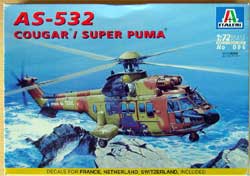
Italeri issued the kit no. 096 around year 1999 as AS. 532 (which has also been released by Revell Germany in 2002).
(NOTE: a story in Dutch on this model appeared written by me Meindert in the Dutch IPMS NL MIP 2008-3 magazine)
I wanted to
model this as a Royal Netherlands AF AS 532 Cougar U2 mk.2. This has a NH90 type
rotor hub as well as other modifications.
It has length
(without rotor) of 16,79 m
Height is 4,60
(without rotor)
Main rotor
diameter is 16,20 m
Tailrotor diameter
3,15 m
After measuring the kit fuselage length, it was seen that this can be done with the exception of the rear composite fairing; (note: this same kit has also been issued by Revell). For a Dutch Cougar U2 mk.2 as compared to a Super Puma, the Cougar AS 532 rear fuselage cone fairing should be even longer. The longer cone also has a "straight" different shape, being 47 cm longer (= 0.65 cm in 1/72 scale). So the Italeri kit's fuselage fairing cone should be converted for a Cougar.
Some smaller modifications are also needed that can done.
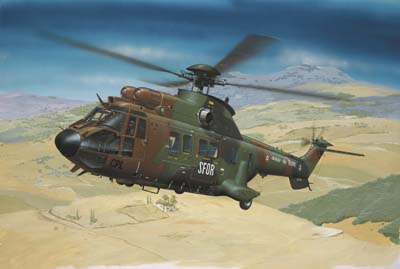
In the Revell issue (year 2002 boxtop
on the right), some extra parts and other decals are provided for Dutch
AF SFOR and German Bundesgrenzschutz.
The Italeri kit decals are for a
French Army helicopter, a civilian one, Swiss one and also provide roundels
for a Dutch Cougar but the "blue" is too light. Also, the letter marking
style is not correct. New decals will be made as required.
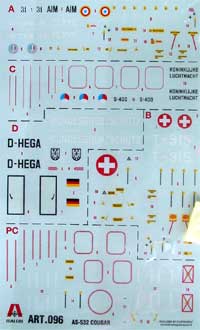
The kit parts are fine with 80 parts
light grey plastic and 18 in clear. The instructions are not always clear,
particularly the antenna placement. Also, parts 58B and 49B are not needed.
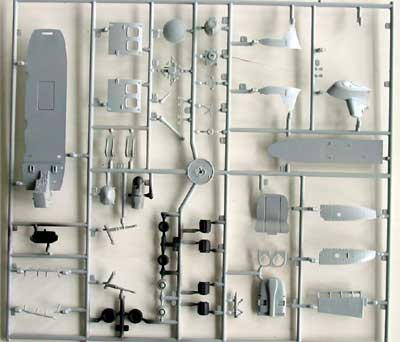
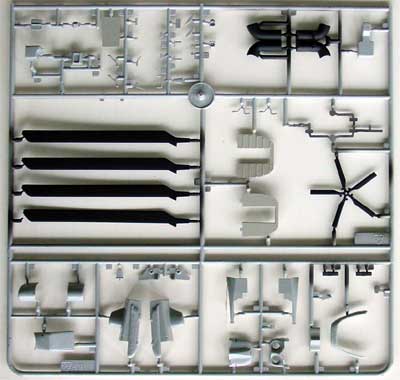
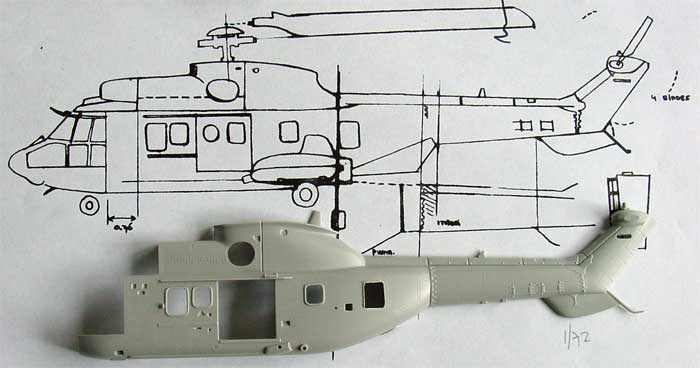
Above the original kit part is seen.
OK, how to make a nice AF Cougar AS 532 U2 .mk 2 ?
Start with the fuselage halves:
A cut was made at the rear fuselage
area as seen here at vertical LINE "Z1" :
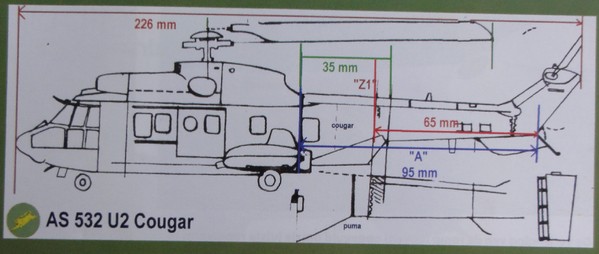
Then, an insert was made from bended white plastic card. The overall extension should be 0,65 cm (or 0.25 inch). This is visible as the overall look is different with straight cone.
The two larger rear windows (seen in STEP 2 of the instructions) were openened up, as incidated on the insides of the fuselage halves. (Version"C"). part 17C is not needed.
Also, the Royal Netherlands AF Cougar can be made
as in model in various configurations:
- It is flown with two types
of main gear interchangeable sponsons: a smaller type and a larger type
(note that the
larger one is very different
than the ones in the BGS kit). The smaller sponsons from the kit will be
used (the larger ones are also included, indicated as 31A or 32A)
- Various engine exhaust configurations
are seen with sometimes a JDD, jet diffusion devices which is in fact
a Infrared protection fairing.
This will not be used on this model.
- The kit windows in the cabin are
correct for a Dutch Cougar. Only a small change should be made (will be
described later on).
The interior was completed as per instructions and set inside the fuselage. The floor was "closed" near the pilot foot area as the floor is closed here and not open as in a Puma. The interior was simply painted dark grey.
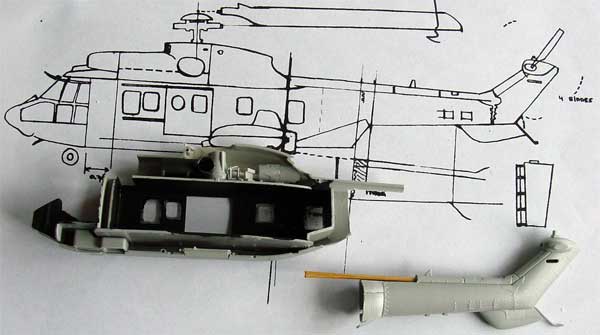
Some detail was added at the engine
compartment.
 ....
....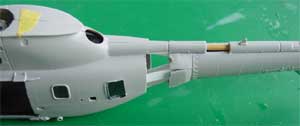
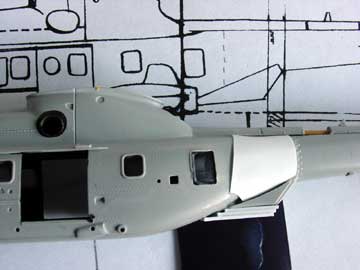
Next, the fuselage part for the hatch
(79B) was also glued on and the height will be made bigger was sections
of plastic card. A lot of putty was used, sanded and reworked until a smooth
result was achieved. Check this by applying a light grey base coat. When
happy with it, the rest of the model can be assembled.
Some tiny antenna panels were added
from thin card.
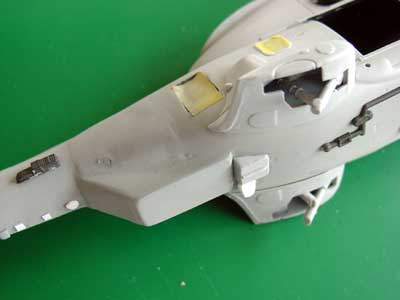

Below the fuselage, some cable ducting
was set as well. Note the masks on the windows. The forward cockpit glazing
is fine and also has provision for the longer radar nose. The intake filters
as per kit were installed, but I added the adjustable intake cones by carving
two bomb tips from the spares box as setting these inside.
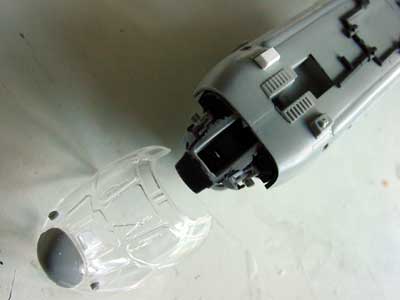
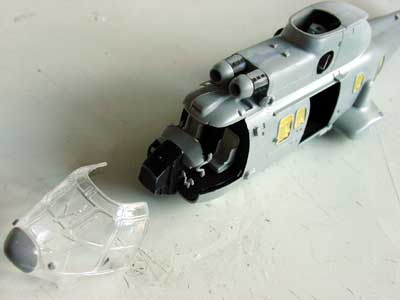
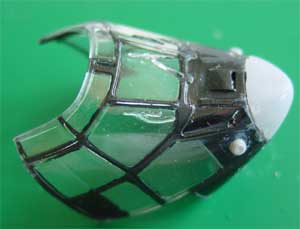
The inside of the frames were painted
black. The two lower smaller windows should be painted/ covered for a Dutch
Cougar.
The main instrument panel with EFIS
displays is by the way a bit too large to small, so cut some plastic. On
each pilot seat , armour plates are fitted on Dutch Cougars, so make this
from thin card. Seat cushions are dark blue. Above the main panel, sun
visors are seen inside the cockpit for the pilots. Make these from thin
clear sheet and paint transparant green (e.g. with Tamiya clear paint).
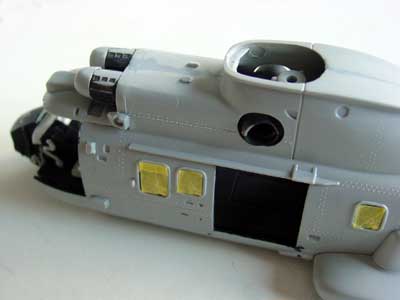 ......
......
The plates
parts 67A and 68A are too thick, I did not used them. This area will be
simply painted black later on.
The four main rotor blades are fine
but sand a bit more the curved tip. Also the inboard blade section "triangle"
should be removed, see picture.
Also, the main rotor diameter should
be a bit larger (2x 4 mm in 1/72 scale) as provided in the kit for this
Dutch Cougar (the real diameter = 16,20 meter). This was achieved by extending
the blade root points (2x 4 mm), good enough at this smaller scale.
Use the parts 62A , 63A. Remove some
height from part 65A and use also part 76A.
Some hub detail was added like the
hydraulic lines from stretched sprue. The balance weights were also added
from rod.
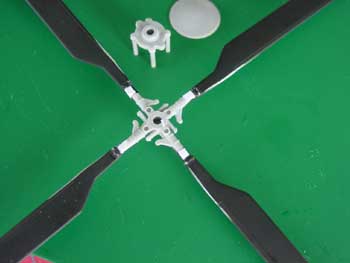 ....
....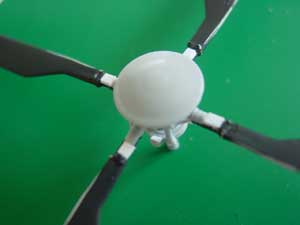
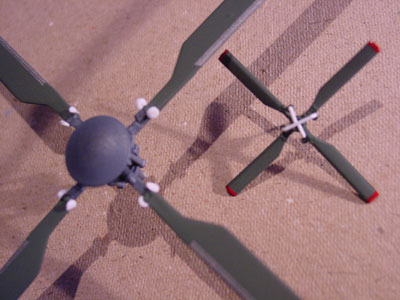
The leading edges of the blades are
metallic. These were masked and sprayed with the airbrush, with the blades
being medium green (Humbrol 117 enamel) upper surfaces and black lower surfaces.
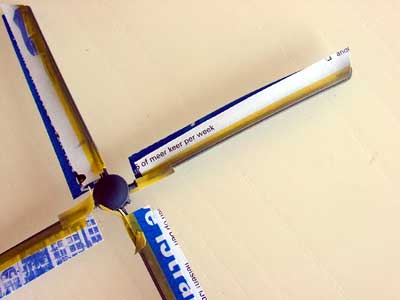 ...
...
The tail rotor should have 4 blades
(and not 5 as in this kit)! So these were cut loose and a new small hub
made from a bomb section from the spares box. The blades were also masked
to get metal leading edges. The rotor head is painted in a grey/blue base
coat. Tail rotor tips are red.
The cockpit glazing is seen here set
on and the model got a grey base coat. Also, the intake filters (called
MPAI: Multi purpose air intake) are fitted. These are in the kit.

![]()
Time for applying the final colours.
The Royal Netherlands Air Force Cougars have a particular colour camouflage scheme:
- RAL 8027 Brown (about
FS 32184 ?)
- RAL 9021 Black
(about FS 32106 ??)
- RAL 6031 Green
(about FS 32165)
Revell has these colours available
with Revell 84, 6 and 65 (or 69) enamels, these were used for the model.
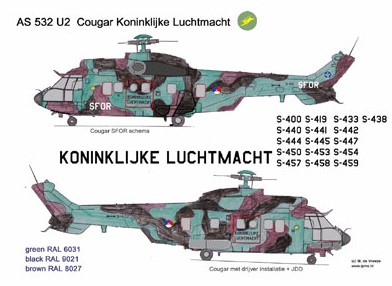
(Note: in 2007, many Dutch Cougars
got an overall grey coat and so have no camouflage; that can be an alternative
paint scheme).
After masking, the camouflage scheme
was applied through the airbrush.
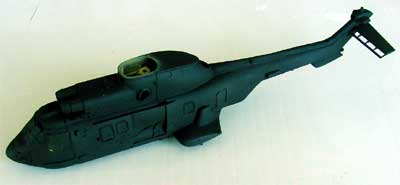
The interior of the engine compartment
is "chamois", being a mix of lightbrown/yellow. Wheel hubs are off white.
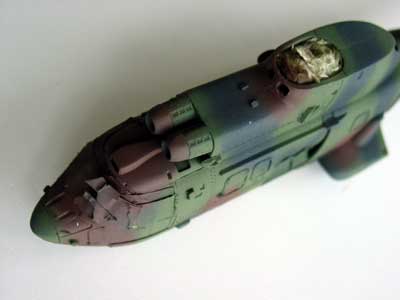

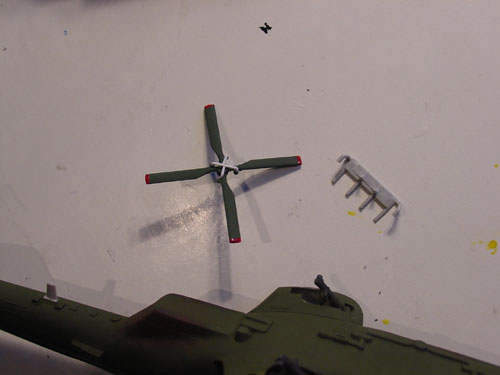
Smaller antenna's and pitot tubes
on the nose were added from rod (the kit parts 70B and 71B are a bit different,
so were not used.).
The entry bars (74A and 75A) were
set as well as the chaff dispensers 78B.
The slotted horizontal stabilizer 33A was set on as well (parts 83B and 85B not required).
A red edge was painted on some windows
that are emergency exits, on other windows the edge is black.
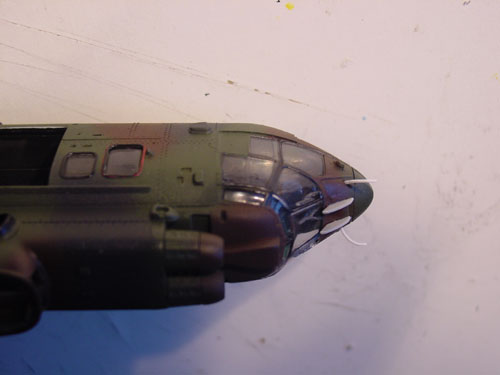
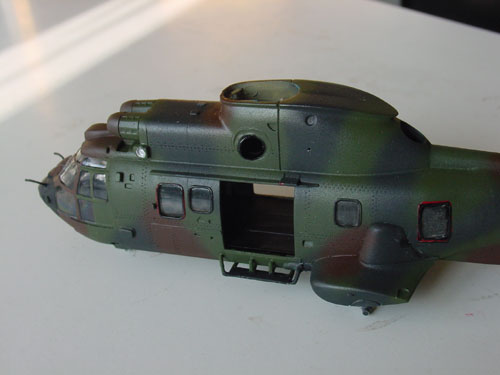
The gear legs were fitted and painted
medium grey and the wheels painted and fitted.
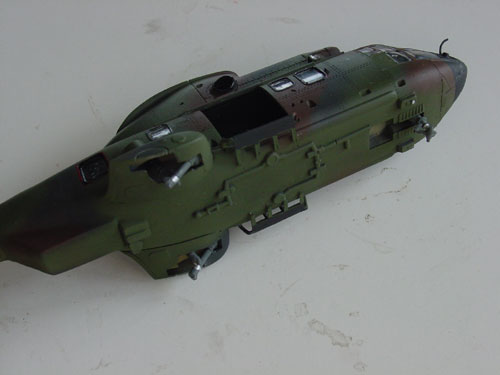
It was now time to add the decals
for the Dutch Cougar. A gloss coat of Johnson
Pledge/Kleer was always set below a decal.

The smaller squadron emblem of the
Cougar was printed on a with sheet of BareMetal foil white decal sheet
(for inkjet). After gloshing it was cut out and added as a normal
decal. The 300 squadron marking was found on the internet; it was downloaded,
set to correct size.

The KONINKLIJKE LUCHTMACHT title on the sliding doors were printed on clear decal sheet (like of BareMetal foil for inktjet printes). This because the kit decal letter style is inaccurate; it should be Typeface AMARILLO.
![]() The roundels came from a Dutch Decal roundel sheet.
The roundels came from a Dutch Decal roundel sheet.
After setting the few decal markings, the model got several sprays of semi-matt Johnson Pledge/Future. Mix 15% Tamiya matting agent (X21 "Flat base" ) with the Future acrylic to get a semi-matt effect.
In the Dutch Cougar cabin doors there are large bulged observation windows, 1 in each door. These were suggested by simply glueing a thin sheet of clear acetate plastic on the kit window. The door edge is also red.
![]()
The result is seen here.
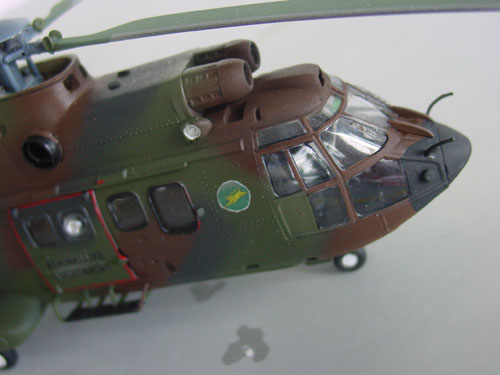
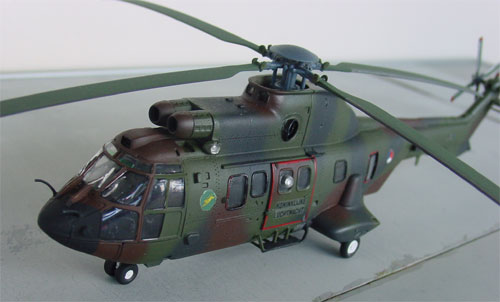
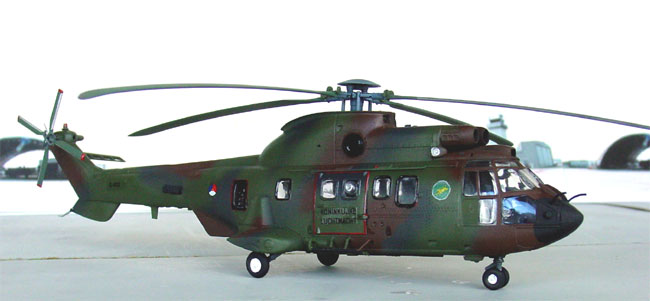

A nice Cougar helicopter in the Dutch 1/72 model collection.
- Janes All the World Aircraft, 1999
- Piloot en Vliegtuig Juni 2002 (Dutch magazine)
- my 1/32 kit Cougar Build
IPMS Nederland Cougar Walkaround
IPMS Nederland real
Cougar info pages...
(c) Copyright "designer"/ All rights reserved.
Created this page September 12, 2012
